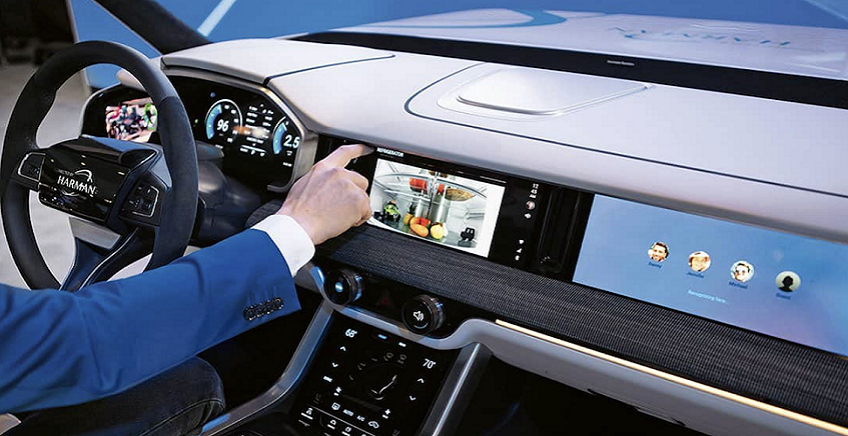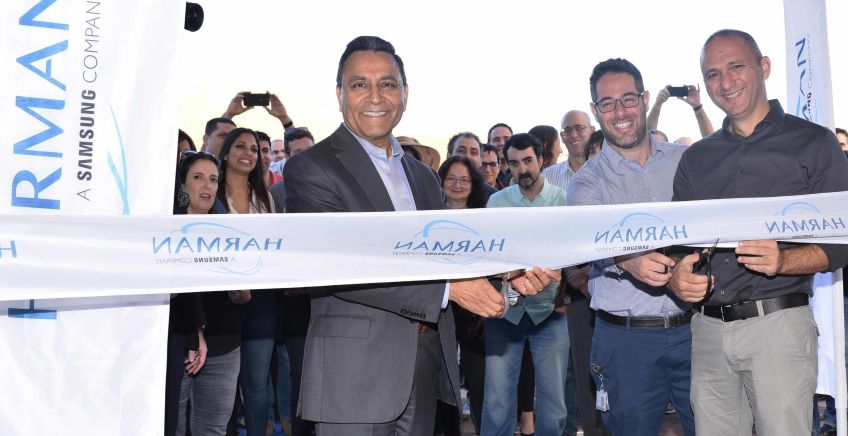This new segment is called “Digital Cockpit”, and one of the major players in this market is Harman, the leading audio systems and consumer electronics company, which was acquired by Samsung in 2017. As more advanced information and entertainment (infotainment) systems entered into vehicles, Harman marked the automotive industry as a strategic market for the company’s future. Today, the automotive division is the largest at Harman, with thousands of employees in R&D centers around the world, including in Israel.
Its digital cockpit’s endeavour relies on its long-standing expertise in the audio systems world (JBL, the speakers’ brand – belongs to Harman), as well as the silicone capabilities of the parent company, Samsung. However, within Harman’s digital cockpit there are many Israeli technologies in various fields, such as Over-the-Air update (OTA), Artificial Intelligence, driver monitoring, and augmented reality – all developed within Harman Israel.
A personalized experience for each passenger
Recently, Huibert Verhoeven, Harman’s SVP Digital Cockpit, arrived for a visit to Israel. In a conversation with Techtime he explained about the significance of driving experience as part of a new model’s branding.
“Expectations among consumers, especially the younger ones, have changed drastically, and in-cabin experience has become of high importance consideration in buying a car. Consumers expect the modern car to provide them with a totally different, new experience. We’re collaborating with many OEMs around the world. Our goal is to turn the in-cabin to become more friendly. The key is the optimization and personalization of the applications within the car for all passengers, based on its positions, sitting angles and preferences.”
Harman’s digital cockpit, in its full configuration, consists of 7 displays at various locations, 8 cameras, 12 microphones, and powerful computer processing capabilities. A few months ago, Harman announced it will provide its digital cockpit system to Toyota, in a $60 million contract. In addition, Harman announced its new thermal camera-based application, Ready Care, which monitors the driver’s drowsiness and its cognitive load.
“The processors within the car are very powerful these days, and are capable of running more demanding applications, not only for the entertainment systems but for more and more use cases. For example, our new driver monitoring capabilities are based on deep-learning sophisticated algorithms and artificial intelligence. The current approach is to base the applications on a limited number of computing units, as multiple units within a distributed architecture incumners scalability and OTA capabilities”.
Stay “fresh”
As mentioned, the digital cockpit is based on a variety of software and hardware technologies, quite a few of which are developed in Harman Israel, one of the most important R&D centers of the company.
Harman Israel, located in Hod-HaSharon, is based on two acquisitions, Red Bend and TowerSec. Red Bend is the developer of over-the-air (OTA) applications in a safe, effective, and reliable manner. These solutions are currently installed in more than 50 million vehicles around the world, by about 40 brands, among them Mercedes, Renault, Fiat-Chrysler, Peugeot-Citroen, and more.
OTA updates are not technically simple as one might think. As the connected car and autonomous driving applications are getting more sophisticated, more frequent upgrades and updates to the systems will be needed. They will get bigger in size and will require higher reliability and speed. OTA updates may add a new app for the entertainment of safety systems, fix a bug in the software, or address a dangerous cyber threat.
Verhoeven highlights the importance of OTA for the driver cabin’s evolution. “The key to the development of the digital cockpit, which is handled by the Israeli team, is how to keep the vehicle ‘fresh’. This brings the car closer to the smartphone, which stays updated”.
Last September, Harman acquired another Israeli company, the start-up Caaresys, the developer of radar-based monitoring systems for passengers. The company, which was founded in 2017, was successfully collaborating with leading car manufacturers in the global industry and provides a solution for monitoring passengers within the vehicle, including vital sensing such as heart and breath measures, and identification of children left in the car.
Verhoeven: “Harman Israel is particularly important for the headquarters. We have human capital here with top technical capabilities. Beyond that, the RedBend team, for example, managed to turn a small local start-up into a world leader in its field, so we have here the ability to make things happen. We have a few teams here, in various fields – all with the desire to learn, develop and evolve. This is why I expect to see more and more new Israeli technologies that will be a major part of our efforts”.


